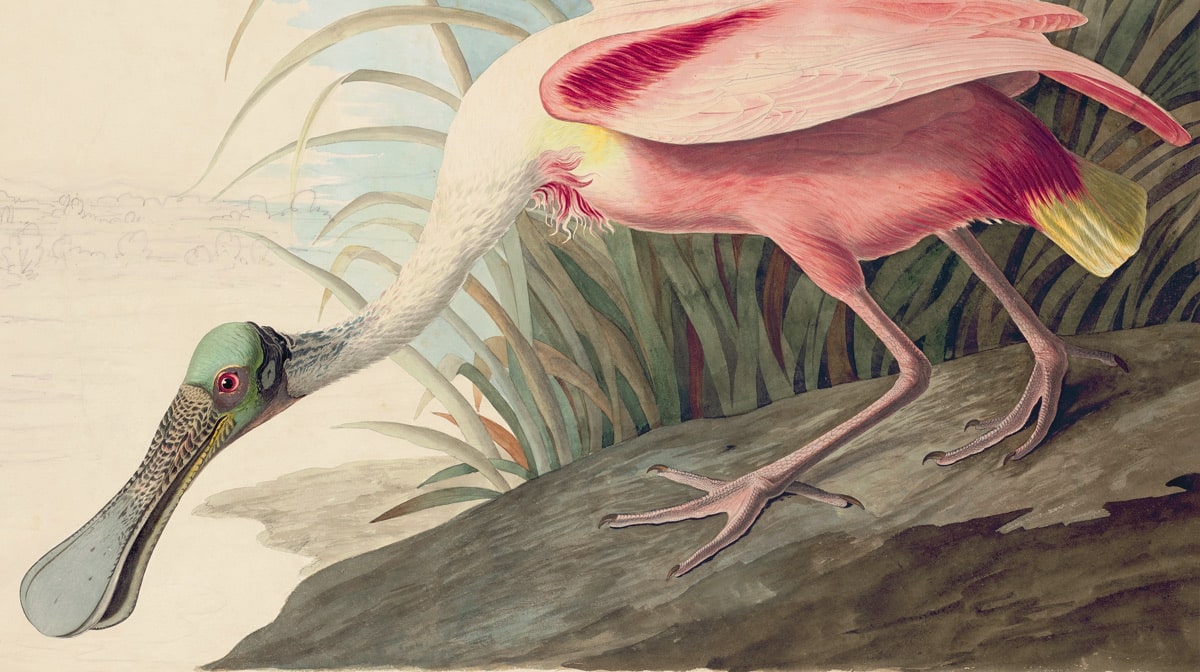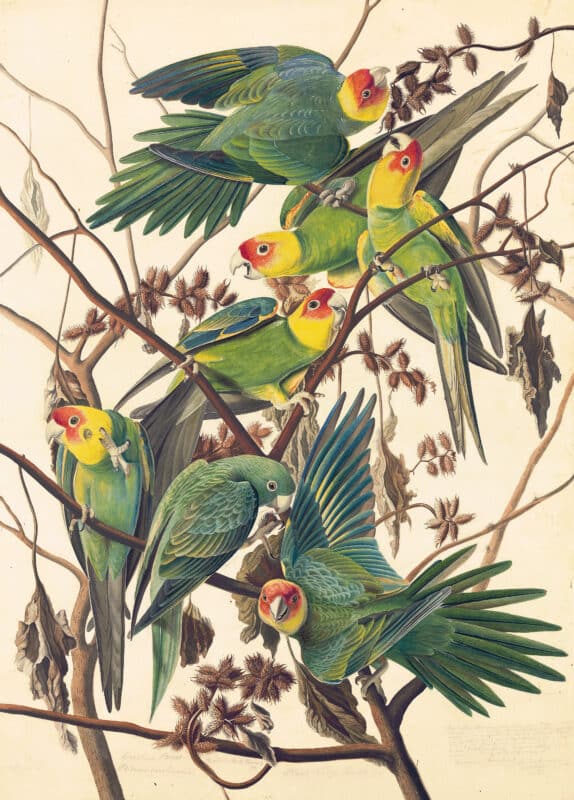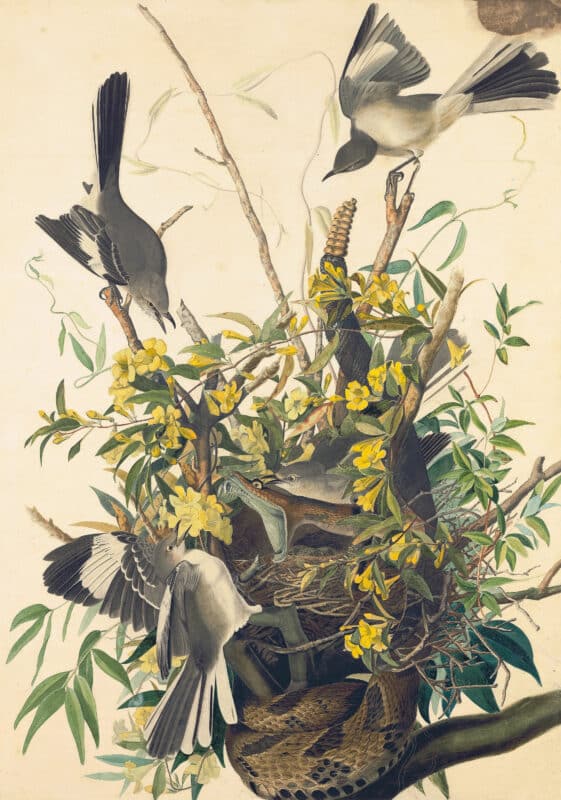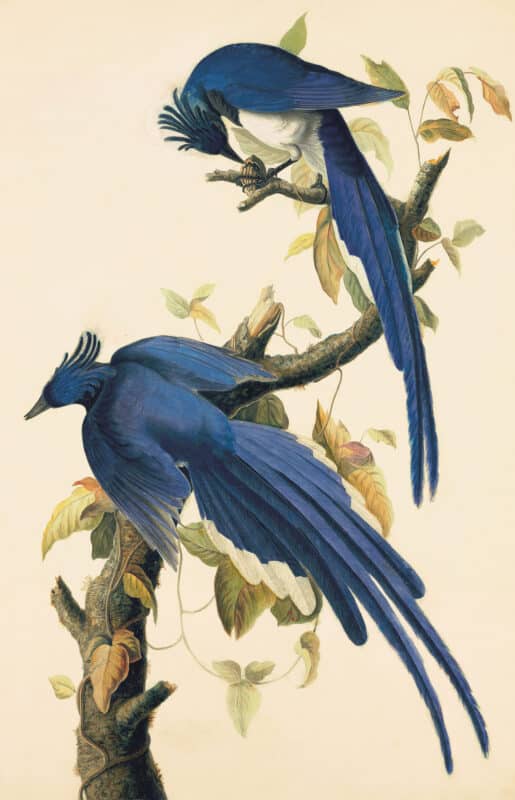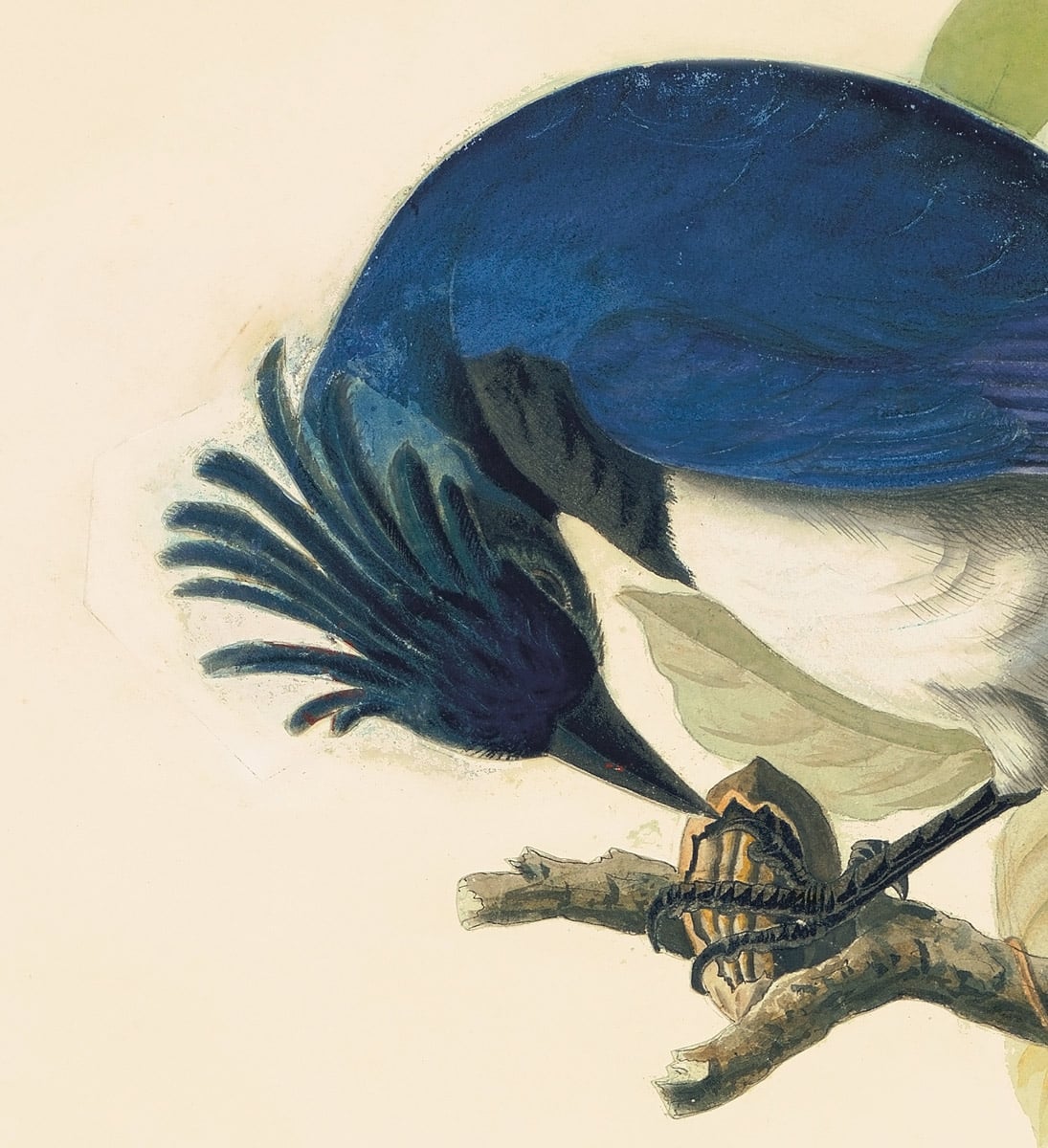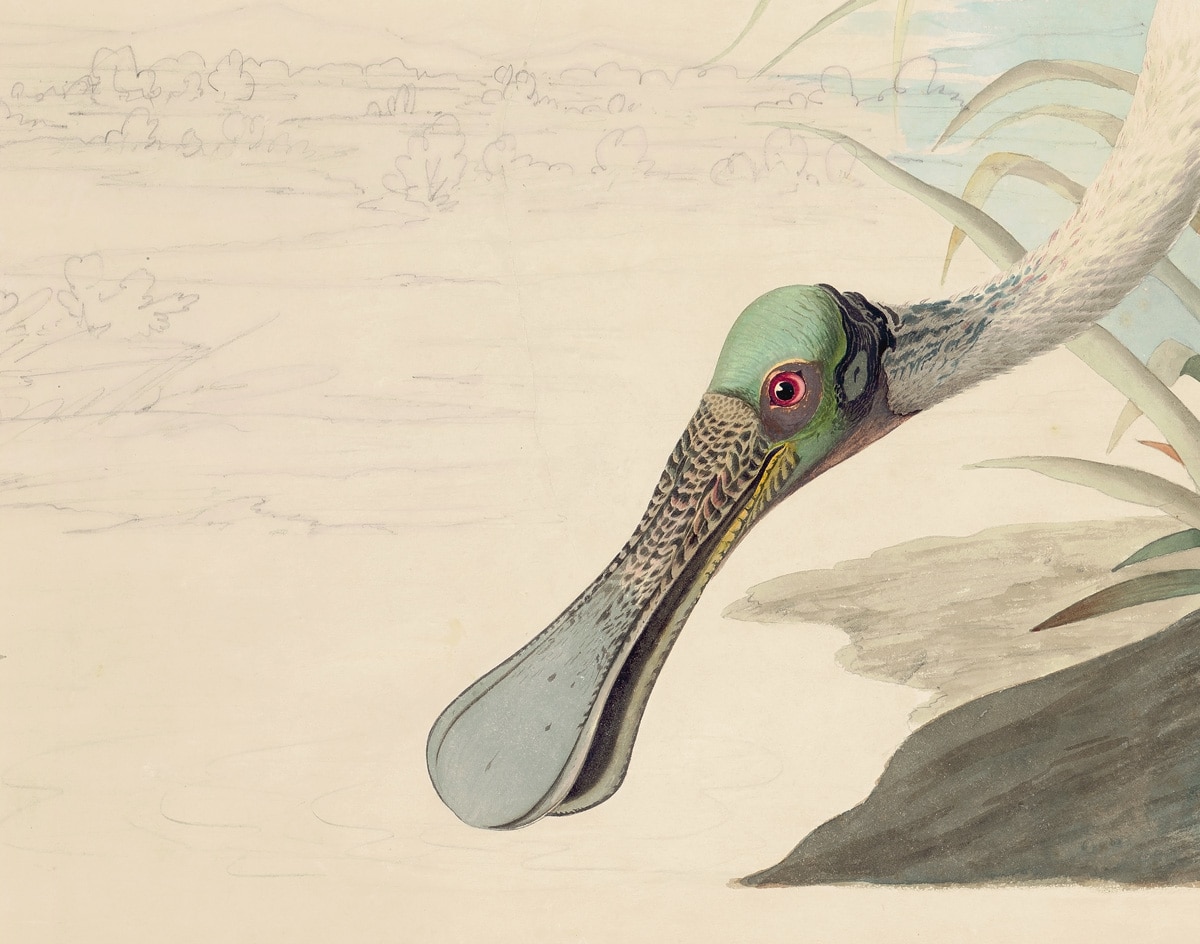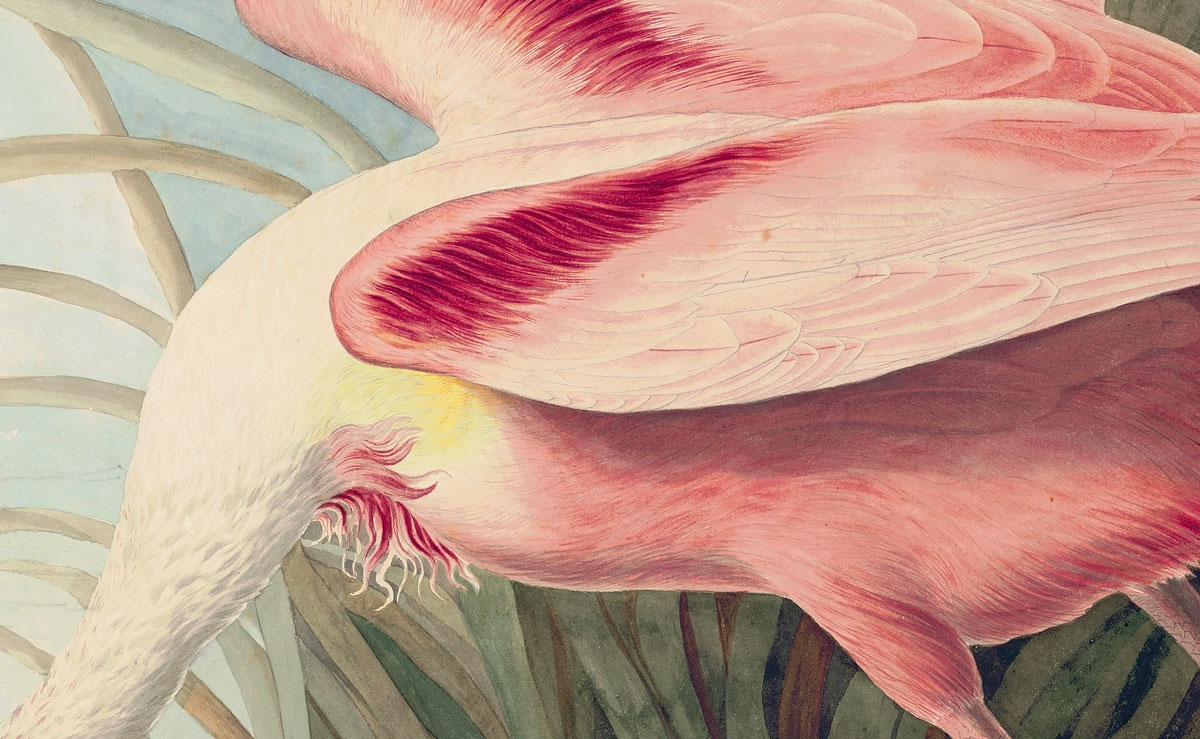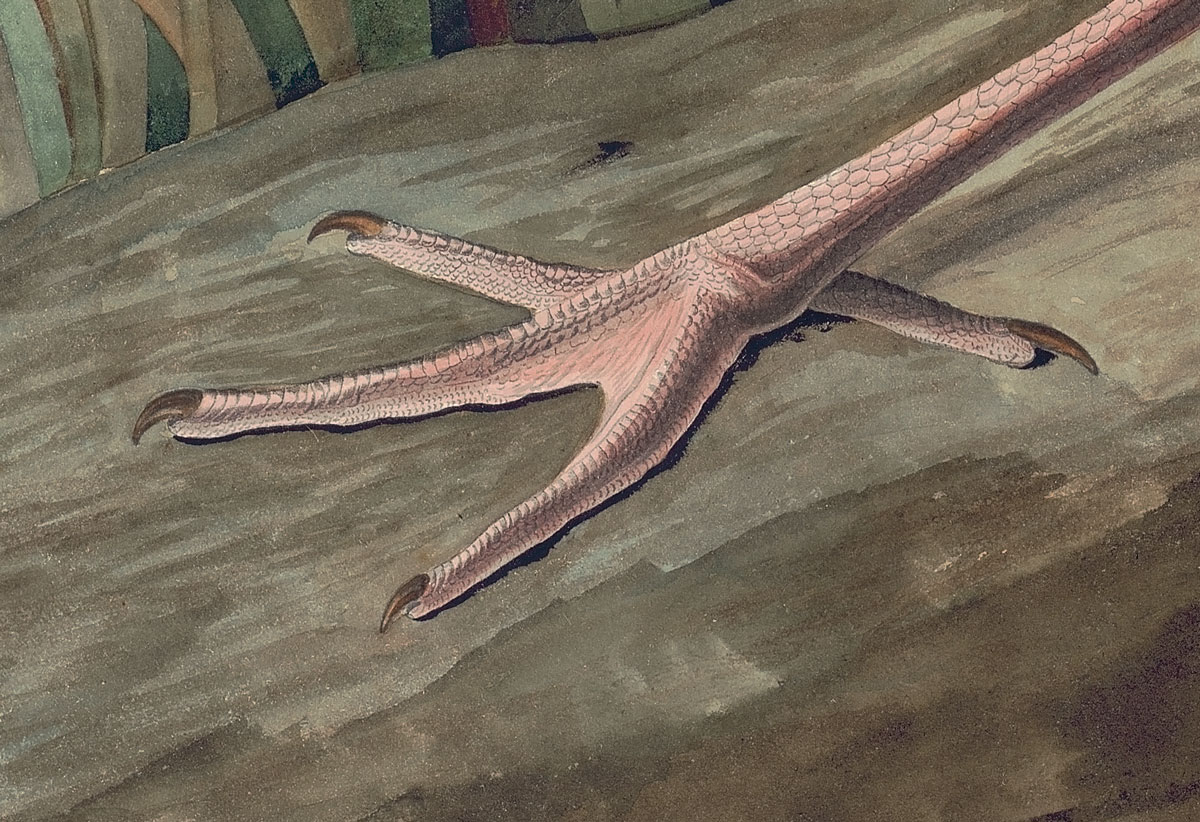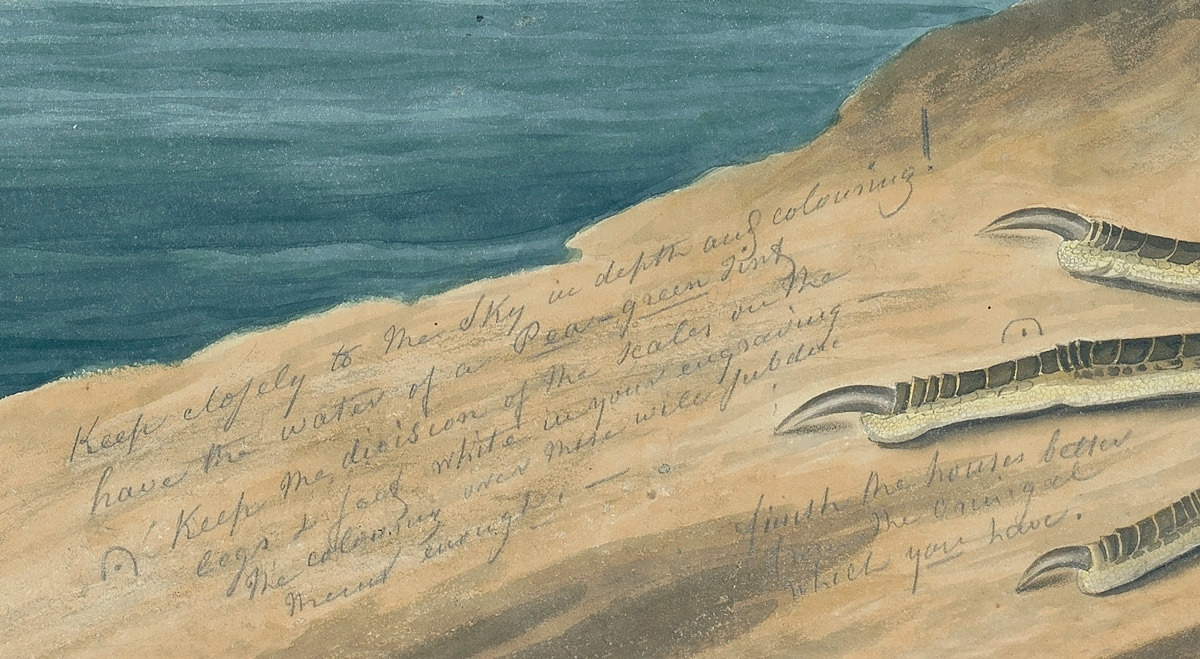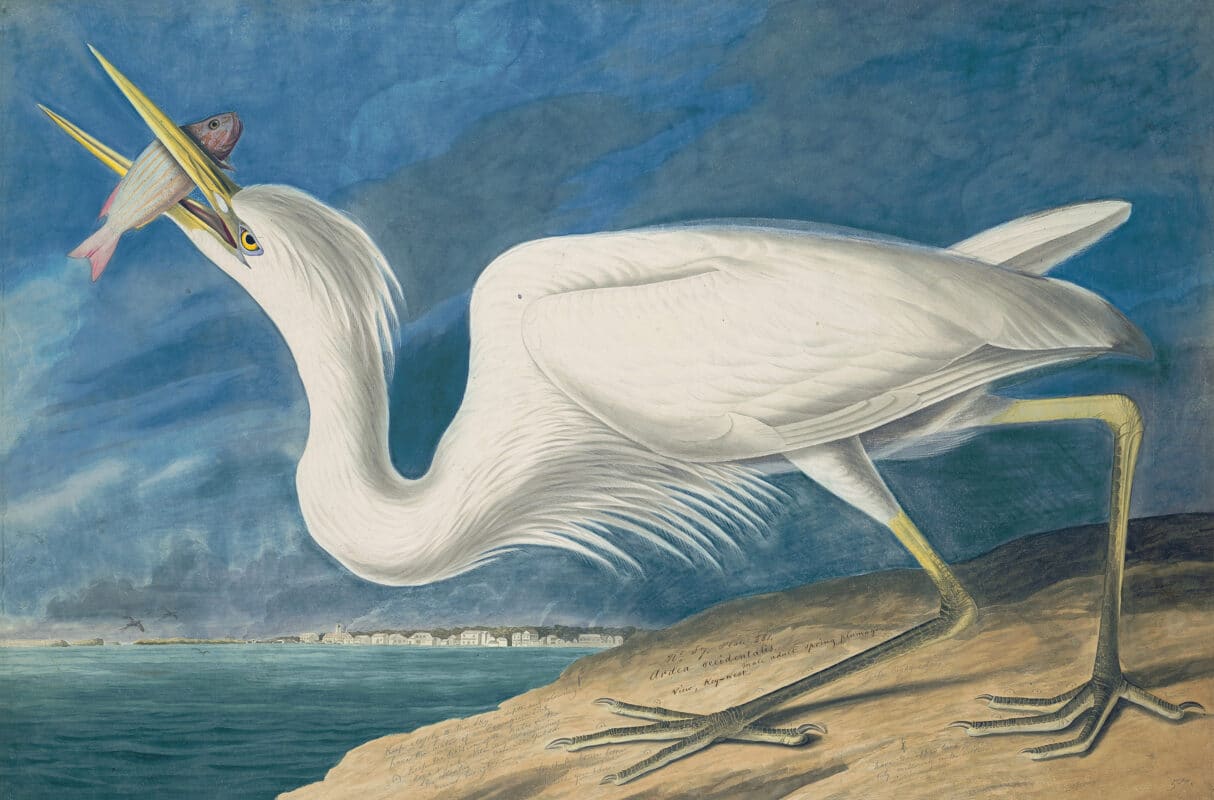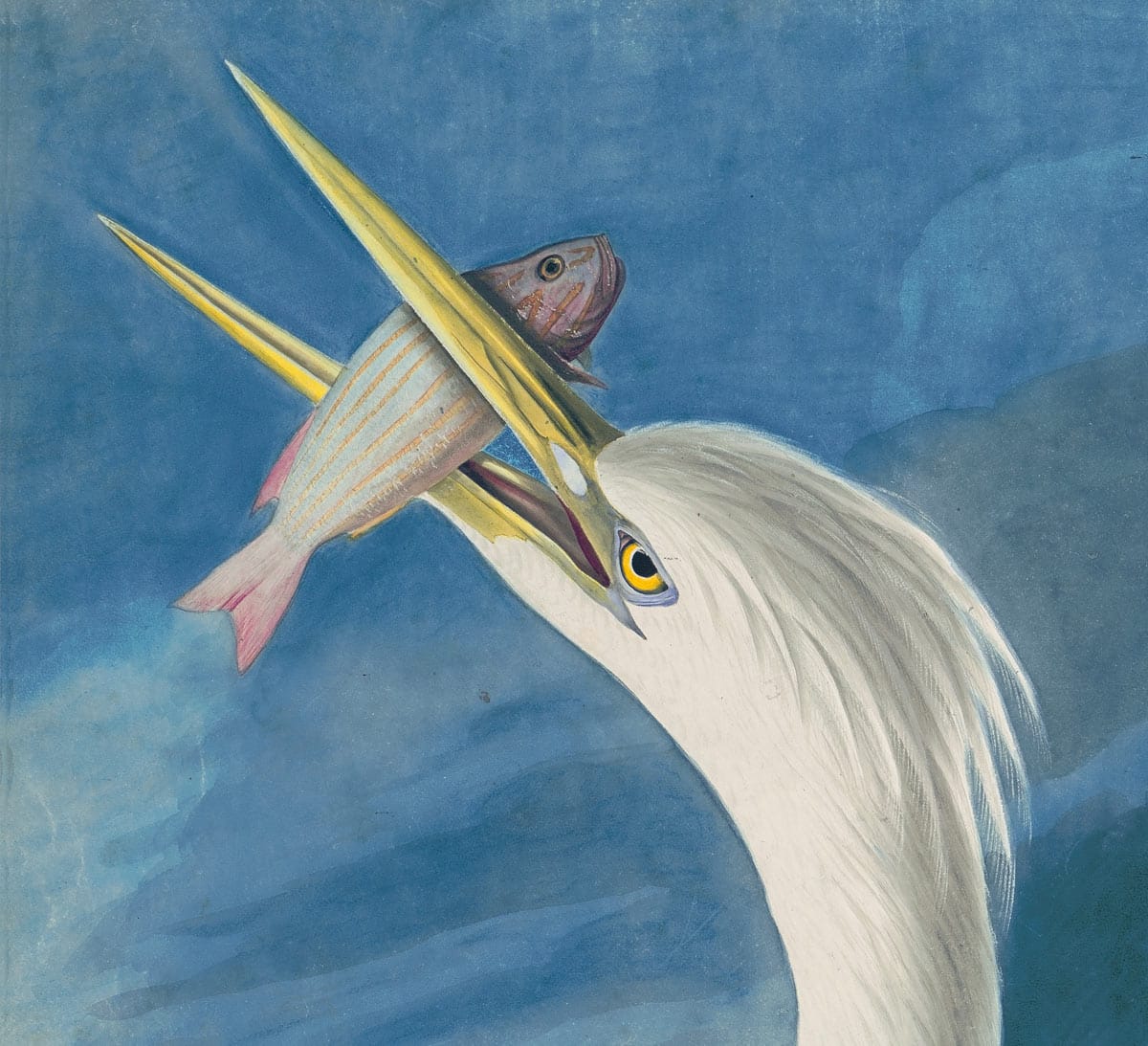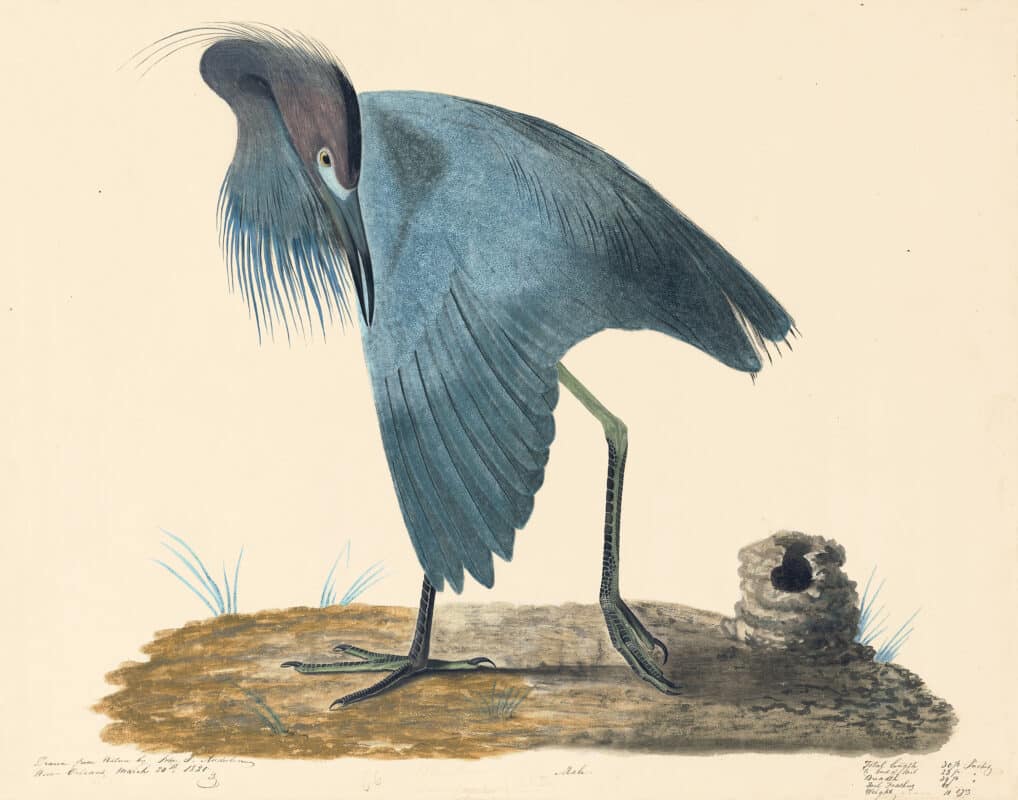Audubon Prints, Information
Investigating Audubon’s 50 Best Watercolors
The Oppenheimer Editions Fine Art Prints of Audubon’s Watercolors for The Birds of America
Established in 1999, Oppenheimer Editions has collaborated with many notable institutions in order to make exclusive works of art available to the public as fine art prints. Among these partnerships is the Oppenheimer Editions/New York Historical Society project which birthed a modern printing of John James Audubon’s watercolors. Having been sold by Audubon’s family directly to the New York Historical Society in 1863, these works of art are not readily available to the public, and, due to their fragility, only shown on select occasions. In order to reconcile these complexities, Oppenheimer Editions gained exclusive rights to produce a limited edition of fine art prints of Audubon’s watercolors.
Audubon’s watercolors essentially acted as visual field notes through which he would transcribe the habitat, activities, and diet of the bird depicted. Additionally, he used them as promotional material when sourcing subscribers for The Birds of America. Moreover, these works were shown in Scotland, and in England where Audubon formed a partnership with engraver Robert Havell Jr. who would eventually produce Audubon’s magnum opus. It is not hard for one to imagine the mileage that these watercolors incurred while being carried through the backwoods and marshy hinterlands of America, as well as the galleries and print studios of London. As a result, the works of art themselves are infrequently exhibited so as to preserve them from further degradation.
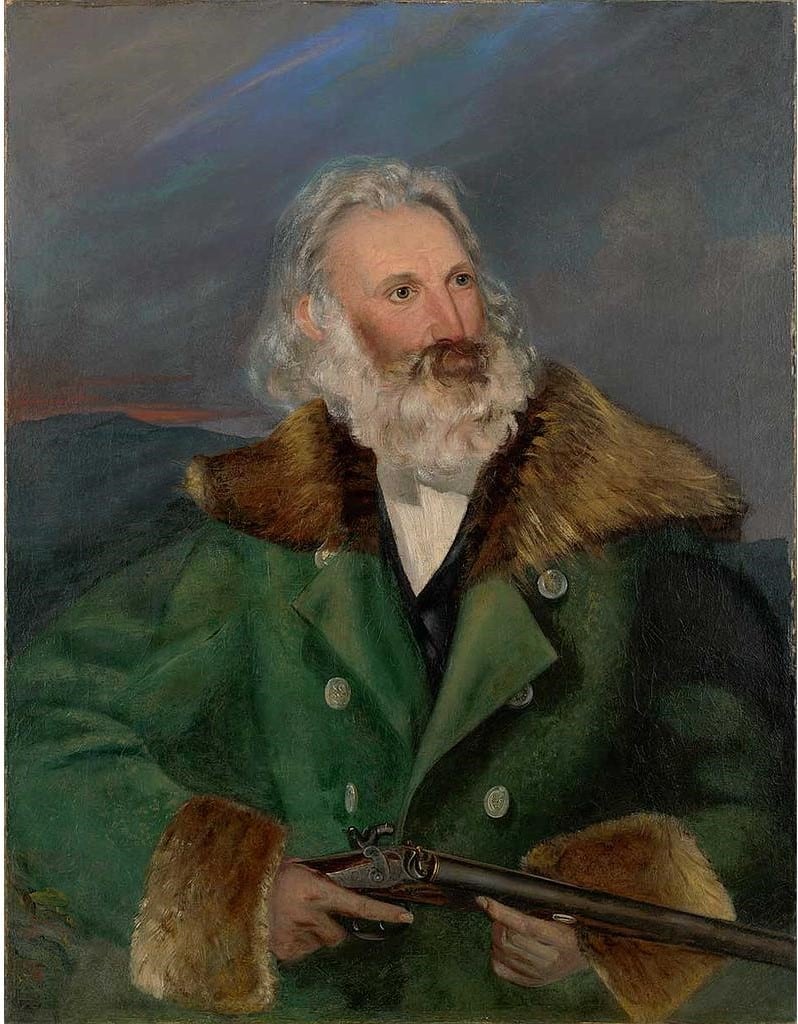
Portrait of J.J. Audubon
Audubon’s Watercolors, John Woodhouse Audubon
Remarkable for a number of reasons, Audubon’s watercolors offer the viewer a raw and unfiltered perspective into Audubon’s working process. Unlike Havell’s engravings of The Birds of America, Audubon’s watercolors bear the marks of a mind at work, and visualize the progression of an idea from conception to fruition. This can be seen in the methodical application and removal of material to the artwork. In many cases, graphite is used to set out the underlying geometry of the scheme, then mediums such as watercolor, gouache, and pastel are added in order to capture the unique life-like quality of the bird.
In her book Audubon’s Aviary: The Original Watercolors for The Birds of America, Roberta J.M. Olson, Curator of Drawings at the New-York Historical Society, explains how despite their categorization as watercolors, Audubon’s sketches are much more complex, and incorporate a variety of mediums. Olson conveys how Audubon’s approach to his watercolors “was unique as he used every means to imitate the varied texture, color, and iridescence of his models”(Olson 2012, 118). In his watercolors, we can discern traces of graphite, swathes of gouache, pastels overlaid with colored washes, and various types of gums and glazes that capture the luster and body of his bird subjects (Olson 2012, 118-124). After the additive process, Audubon would often subtract material with a palette knife to expose the natural sheet tone of the paper, or cover over portions of the rendering with collage. The use of collage can be seen above in the Columbia Jay, Pl. 96, in which the faint outline of the layered paper can be discerned around the crown feathers of the uppermost bird. Through these materials we can trace Audubon’s creative process and intuit the progression of his ideas as they manifest into finalized works of art.
Take for example the Roseate Spoonbill, Pl. 321, which elucidates Audubon’s approach to first rendering the bird before returning to the background, or allowing his assistants or Havell to intuit the schema. In fact, several works bear instructional notes to Havell, such as in the Great White Heron, Pl. 281, in which Audubon advises him to “Keep closely to the Sky in depth and colouring; have the water of a Pea-green tint. Keep the division of the scales on the legs & feet white in your engraving – the colouring over these will subdue them enough/finish the houses better/ from the original, etc.” By observing Audubon’s watercolors, we are able to trace the progression of these compositions from inception to completion. Additionally, are made privy to the collaborative efforts of those who assisted Audubon, namely his assistants, Robert Havell Jr., and Havell’s studio of engravers and colorists. As a result, these works of art act as a sonnet to the material process employed in bringing about the Birds of America.
Out of over 474 watercolors, the Oppenheimer Editions of Audubon’s 50 Best Watercolors are a curated selection of works that exemplify the breadth, complexity, and essential character of Audubon’s artwork. These high-quality facsimiles capture the spontaneity, inventiveness, and tenderness of Audubon’s original watercolors. Moreover, this selection of prints feature several of Audubon’s watercolors that were never reproduced by Havell or Bien. Instead, they exist solely in the New York Historical Society’s repository, and as Oppenheimer Editions fine art prints. One such watercolor is the Little Blue Heron, Pl. 39A, which was never printed in Birds of America.
Printed through a process called giclée on 100% rag watercolor paper, the Oppenheimer Editions of Audubon’s 50 Best Watercolors are limited edition, archival prints individually sized to replicate the unique dimensions of the original watercolors. Moreover, as Joel Oppenheimer, founder of Oppenheimer Editions, explains, they “directly capture the artist’s hand and fundamental vision unlike any other publication.” Begun in 2006, the collaboration between Oppenheimer Editions and the New York Historical Society “resulted in the first ever actual-size fine art printing of John James Audubon’s original watercolors.” Today, major art and educational institutions including “the Beinecke Rare Book & Manuscript Library at Yale University, Nevada Museum of Art, and New-York Historical Society have acquired this landmark in American natural history art for their collections for public viewing and scholarly study” (Joel Oppenheimer).

